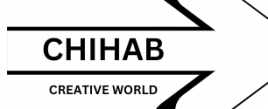When writing an effective marketing plan or creative brief for a project, it’s important to get the details correct. By choosing the wrong wording or structure, you can inadvertently create confusion and even cause the client or team to become frustrated. So before you start, ensure that you have a clear idea of what you want to achieve and whether the target audience agrees with the message you are communicating.
The creative brief contains a summary of what you need to communicate, as well as some guidelines and examples on how you should deliver it. It’s often presented in an executive briefing format. In short, the creative brief provides insight into the client or organization, their goals, and the objectives they hope to meet through your design work. Below instead of giving you tips on how to choose leroijohnny online casino games, we shall be giving you tips on creating a great creative brief.
– Understand your audience.
This is one of the most important parts of any creative brief. You need to understand who will be reading your document and why. This means understanding where they live, what they do, and what inspires them. If you don’t know this information about your audience, then you won’t be able to write a compelling brief.
– Know your audience.
You also need to know yourself. What motivates you? Why do you like the product or service you’re designing? How would you feel if someone designed something similar to yours? Knowing these things helps you better understand what makes your clients tick.
– Write clearly.
Your creative brief needs to be concise and easy to read. Don’t use jargon or technical terms unless they are absolutely necessary. Be sure to include all relevant information, including research results, competitor analysis, and other supporting materials.

– Make decisions quickly.
When working on a creative brief, there may be many ideas and concepts to consider. To make sure you choose the right ones, try making quick decisions. For example, if you’re not sure which direction to take, just pick one and move forward. The more time you spend debating over every detail, the less likely you’ll end up making a decision at all.
– Keep it simple.
Creative briefs are meant to be straightforward. They shouldn’t contain too much information or require extensive explanation. Instead, keep your creative brief focused on the main points. Use bullet points whenever possible.
– Include visuals.
It’s best to avoid using text alone when creating a creative brief. Visual elements such as images, graphs, charts, and infographics help convey complex messages in a way that words cannot.
– Think ahead.
If you’re planning on presenting a proposal, you need to think about how you might present it. Will you give a verbal presentation? Would you prefer to show slides? Or maybe you’d rather have a video instead of a written report. All of these options should be included in your creative brief so that you can prepare accordingly
– Know why you’re doing this project.
Before starting any new project, ask yourself why you’re taking on this particular job. Is it because you want to earn money, or because you enjoy the challenge? Whatever your motivation, it’s essential that you understand it thoroughly. Otherwise, you could waste a lot of time and energy trying to convince people that your idea is worth pursuing.
– Have fun.
Finally, remember to have fun with your creative brief. After all, it’s supposed to be enjoyable! So, go for it! Put some personality into your work and make it unique. It doesn’t matter if it turns out to be bad—at least you tried.

